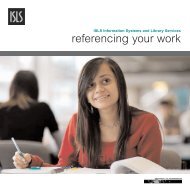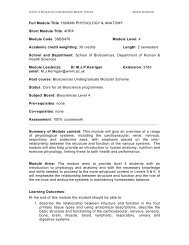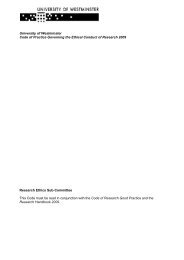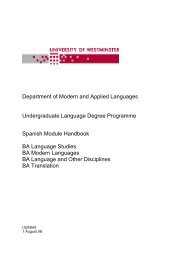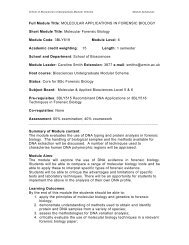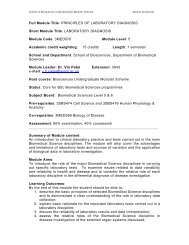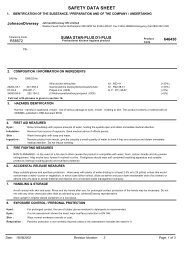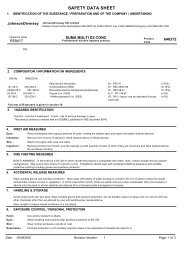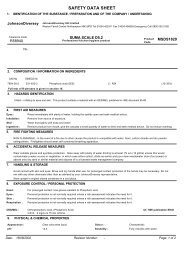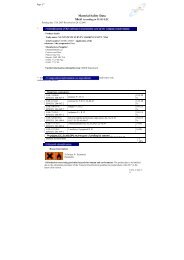CONTENTS 1. Introduction 1.1 Course Outline 1 1.2 Introduction ...
CONTENTS 1. Introduction 1.1 Course Outline 1 1.2 Introduction ...
CONTENTS 1. Introduction 1.1 Course Outline 1 1.2 Introduction ...
Create successful ePaper yourself
Turn your PDF publications into a flip-book with our unique Google optimized e-Paper software.
practice and to develop commercial links, while considering legal and ethical aspects and business<br />
practices.<br />
Teaching and Learning Methods: Illustrated lectures/practical demonstrations, studio and<br />
darkroom work and individual and group tutorials (total approx 36 hours), Critical review and<br />
analysis of work produced. The module is actually scheduled every other week over two<br />
semesters. Students will be required to progress their research and imagery through shooting,<br />
analysing with tutorial support and re-shooting to obtain the final product.<br />
Assessment Rationale:<br />
• The portfolio of images will assess the students’ ability to interpret a creative brief,<br />
demonstrate technical skills, and develop and apply ideas to produce high quality images.<br />
(Learning outcomes: 1,3,5 and 6)<br />
• The client based project will assess students’ understanding of professional practice, the<br />
requirements of working in a commercial context and response to a client led brief. (Learning<br />
outcomes: 1- 5)<br />
• The critical review and written self evaluation will demonstrate the ability of the student to<br />
select and critically evaluate images.(Learning outcome: 7)<br />
Assessment criteria:<br />
The extent to which the student is able to demonstrate the ability to:<br />
• Comment critically in tutorials and implement actions arising from tutorials.<br />
• Present work in line with module criteria.<br />
• Complete all aspects of a brief.<br />
• Apply an appropriate method or approach in the creation of the work.<br />
• Originally respond to a set brief.<br />
Assessment Methods and Weightings:<br />
Practical Projects 50%<br />
Client based projects 40%<br />
Self –evaluation 10%<br />
Sources:<br />
M. Langford: Basic Photography, Focal Press, Oxford, 6 th edition. (2000)<br />
M. Langford: Advanced Photography, Focal Press, Oxford, 6 th edition. (1999)<br />
L. Stroebel & R. Zakia (Editors) The Focal Encyclopedia of Photography, Focal Press, Oxford, 3rd<br />
edition. (1993)<br />
R. E. Jacobson, S.F. Ray and G.G. Attridge: The Manual of Photography (9 th Edition), Focal Press,<br />
London, UK. (2000)<br />
Association of Photographers Beyond the Lens, 2 nd edition, AOP 1996<br />
V. Carlson and S. Carlson: Professional Lighting Handbook, 2 nd Edition, Focal press (1991)<br />
F. Hunter and P. Fujua: Light Science and magic: An introduction to photographic lighting, Focal<br />
Press, USA (1990)<br />
NUJ Freelance and Copyright booklets<br />
B. Rosenblum: Photographers at work – A Sociology of Photographic Styles, Holmes and Meir<br />
(1978)<br />
R. Sobieszek: The Art of Persuasion, Abrams (1988)<br />
J. Tinsley: Commercial Photography: a survival guide. BFP Books (1992)<br />
DPI_Hbook 62 ©University of Westminster




